A few weeks ago my family and I visited Istanbul, the bridge between Asia and Europe.
Islam: This was the first time I visited a Muslim country. Istanbul has over 3,000 mosques and six times a day you hear the call to prayer or ezan, coming out of speakers everywhere in the city. The exact times change daily based on latitude, longitude, sunrise, sunset, and geographical location of each mosque in relation to Mecca.
Ignoring the call to prayers, the mosques, the hijabs, the burkas, and the almost universal beard in men, it felt like any other non-Muslim city I’ve visited.
On one of the days, we visited a Whirling Dervishes ceremony where men wearing white robes dance in circles as a form of religious meditation and a tradition that dates back to the 13th century and Rumi. After one hour of looking at the same six people dance in circles, you become an expert at judging rank and mastery based on how smoothly they move, the height and shape of their hats, and how much the arms fall from the beginning of a round to the end. There was a group of musicians who led the performance from beginning to end. It included a reed-flute player who, as is typical in this performance, improvised at some point, but, like with Jazz, I can’t tell when that happens. We also learnt that the dancers train for this performance by dancing around a nail on the floor and salt to prevent blisters for months. The performance didn’t feel as spiritual as I imagined, probably because of the language barrier, but it was memorable.
Scams and pestering: The taxi that drove us from the airport to the city center tried to scam us, three shoe cleaners also tried to scam us, and I didn’t willingly enter any shops because I knew they were after me, particularly in the Grand Bazaar where shopkeepers constantly assailed us. Several of them could tell I was Spanish without me speaking a word in Spanish, they must have been able to tell from my English accent or my face. Like Sun Tzu said: a good general doesn’t go into battle unless he knows he can win, and I’m pretty sure I stood no chance bartering with people whose living depends on their ability to barter.
Restaurants aren’t a safe place either: we went to one next to the hotel the first night, and almost every single time we left or entered the hotel after that night, the waiter who served us came out to shake hands and ask if we were going to have lunch or dinner there. The street code for all of this seems to be: act as if these human beings don’t exist, don’t make eye contact. I found it draining and dehumanizing.
And another restaurant where we had a great time insisted on us trying out their rooftop restaurant. They didn’t say that the menu for the other restaurant was twice as expensive and had no vegetarian dishes which they knew we ate.
The experience with the staff at the hotel where we stayed, Kupeli Hotel, was the complete opposite, though: every employee as well as the owner were extremely helpful and friendly. One of them had a great sense of humor and went way way beyond the call of duty, including going to the airport himself, to help us recover a mobile phone lost inside a taxi. Recommended.
Mosques: We visited Hagia Sophia, a mosque that started as an Orthodox church in 537 AD but changed religions and shape over the centuries, and we also went to the Blue Mosque, which was completed in 1617. From the moment you enter any of them, women have to cover their heads. To someone with the deep belief that men and women should be treated as equally as possible, that felt wrong.
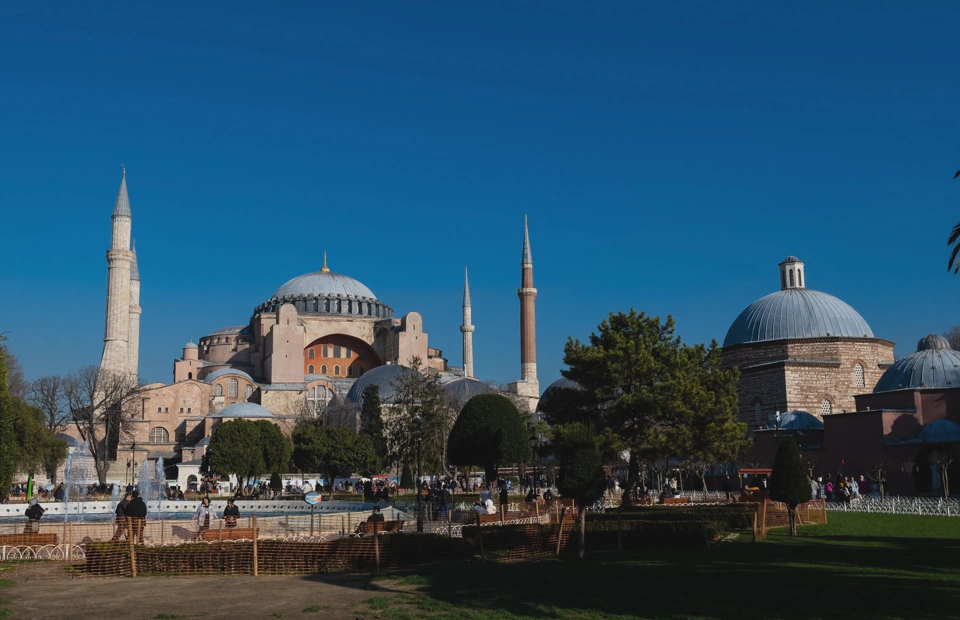
Compared to cathedrals or Buddhist temples, the interior of the mosques we visited felt empty. Their height and spaciousness probably contributed to that, and probably to the feeling I have when visiting buildings like this: they make me feel small and distant from whatever is up there.
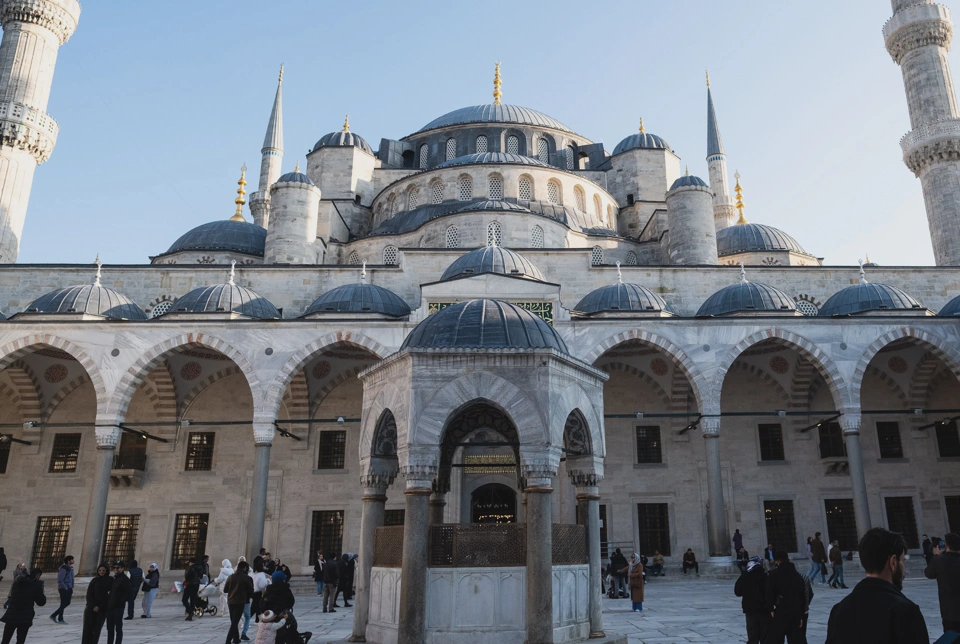
Other points of interest: We visited the Basilica Cistern, essentially a 6th-century well that served the basilica that used to exist on top of it, and the Topkapi Palace. The cistern has medusa heads supporting a pillar for protection purposes, but also jellyfish lamps, among other artworks. In Spanish jellyfish and medusas share the same word so I saw a connection but I have no idea why the jellyfish were placed there. The cistern’s Romanic architecture felt familiar, and the fact that I could easily see myself using a place like this in Dungeons & Dragons made it a favorite on this trip.
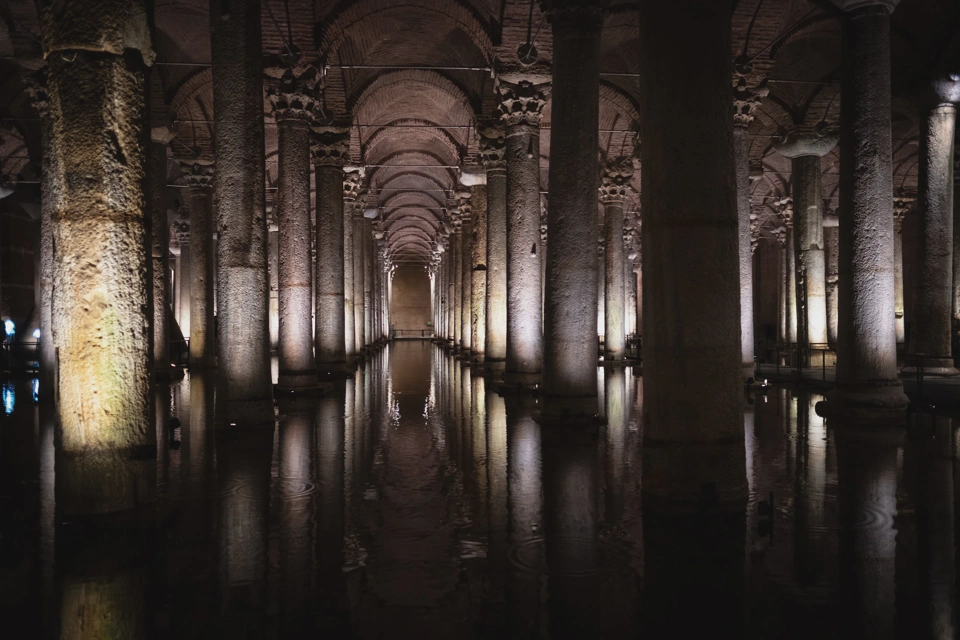
We also visited the Topkapi Palace, a complex that dates back to the 1460s and houses buildings like the “Circumcision Room” and the “Imperial Harem”. The harem sub-complex housed the sultan’s concubines and, at some point, his brothers, so that he wouldn’t have to kill them; I’m not kidding, they had laws like that to prevent fratricide. The problem was that many of the brothers ended up crazy by the time their big brother had died and they left the harem to replace him. This is considered one of the main reasons the Ottoman Empire declined. Regarding the concubines, the harem had at some point more than a thousand women, children and eunuchs. The sultan at that time wasn’t completely idle fathering more than 100 kids.
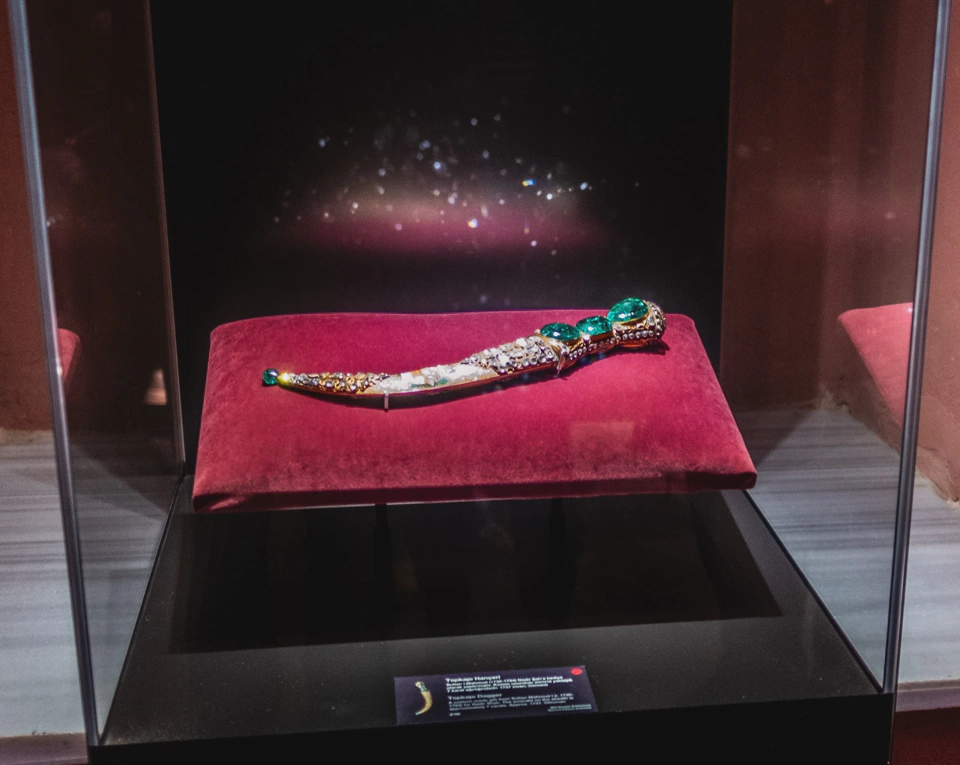
One of the most iconic places is the Galata Bridge, which connects Eastern Istanbul with the Western. We crossed it a few times, and no matter the time of day, we always saw people fishing.
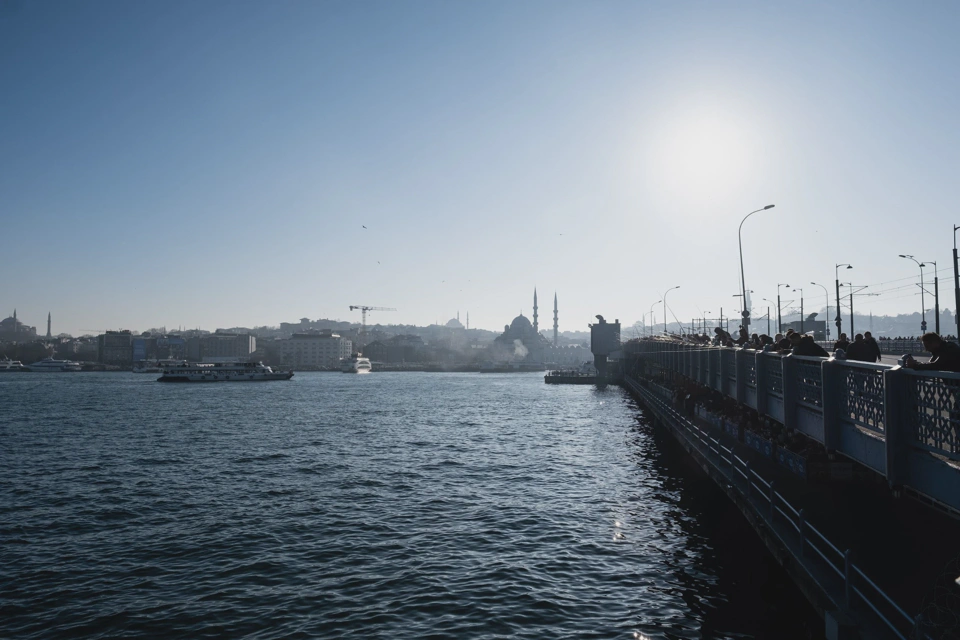
Near the end of the trip, we took a boat tour through the Bosphorus. We were picked up by bus, which was quite an adventure. Driving the bus through the intricate roads was an old man whose hands shaked visibly. There were two or three young people coming out of the bus in some street, then coming back into the bus a few streets later sometimes with new tourists, sometimes without any. At some point the driver seemed to say the Turkish equivalent of “I’m not waiting any longer” and left for the harbor where we arrived about five minutes before our large tourist boat departed.
The tour guides talked in Turkish, English, and Russian, a change from the usual European and Japanese languages I’m used to in these tours. The boat had a beautifully colored chained parrot to entertain us. It was sad to see such a large and beautiful animal limited in that way. It was also really loud.
During the tour we saw a large number of buildings, but the one I remember most is the Dolmabahçe Palace, completed in 1887. It’s only 18% the size of the Louvre, but it looked incredibly big. We made a stop during boat tour, and the pretty guide who talked most of the time, guided us in front of a specific leather shop and gave the least inspired spiel I’ve ever heard to prod us to buy their goods.
On the way back to the hotel, we got a different bus driver. This one seemed to be on a real hurry driving through the chaotic evening rush hour, honking constantly when, to me, there was nothing to honk at, taking every little shortcut a vehicle half the size could take, and with his attention scaringly long on his phone Google Map. I wonder how long he would have lasted in a 10 days silent meditation Vipassana retreat.
Other events: one of the days we went to a workshop where we built Turkish lamps using little mosaics, a tradition that is more than 6,000 years old. As I was finishing my Doctor Who phone cabin and X-Wing themed lamp, the guide left to pick up the next group. Around that time a different group came with a different guide to do a coffee workshop a table away. It felt part of a conveyor belt. Loes, who came with us but didn’t participate, sat on a bar area they had but even though she asked, they refused to serve her any drinks or pastry that they had on display “because the bar was closed until noon.” She sat essentially outdoors for an hour, and then another hour with us while we waited for the lamps to be ready to pick up.
Streets: The city has 16M people, but it’s spread out and we stuck to the historic city center, so it didn’t feel like the metropolis it is. It was packed everywhere we walked and they felt in between the dense-but-“civilized” streets of London and the absolute chaos of Hyderabad. During the late afternoons, most shops had towers of packing boxes in front of them, it was quite the sight. Something else that got my attention where the ATMs: almost everywhere I saw them, I found 5 to 10 different ATMs together. I guess that’s more cost-effective to protect. And one last thing: cats. They were everywhere. They seem to connect back to Ottoman times when the houses were mostly made of wood and that attracted a lot of mice and rats.
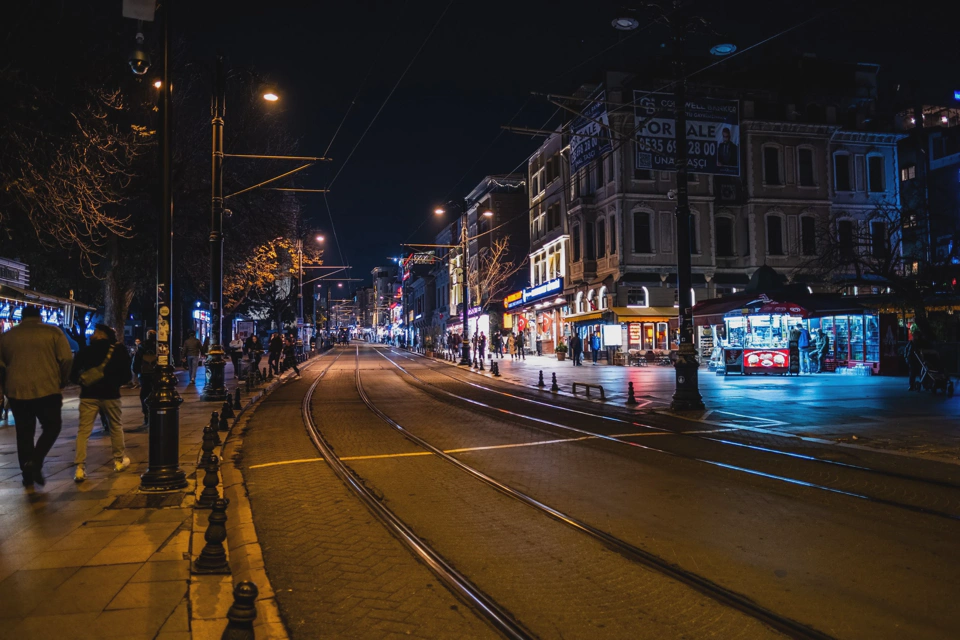
Food: we had Indian the first night, which was delicious but caused us to lie down for almost a couple of days due to food poisoning. After that, we trod carefully and had no problems getting vegetarian dishes and eating well at reasonable prices.
One of the restaurants that we visited had music videos from 80s and 90s, and the young waiters were typical over-the-top-friendly-and-charming. The food was good and we had a good time. Later that day we visited a nearby restaurant that had exactly the same menu with the same typos, same interior decoration, same set of free appetizers, etc, but when we asked, out of curiosity, if they were related to the other restaurant they insisted that they weren’t. Why lie?
Visiting such a different culture reminds me of the first time I visited Japan and the associated cultural shock. This time, though, it felt more dangerous and taxing.